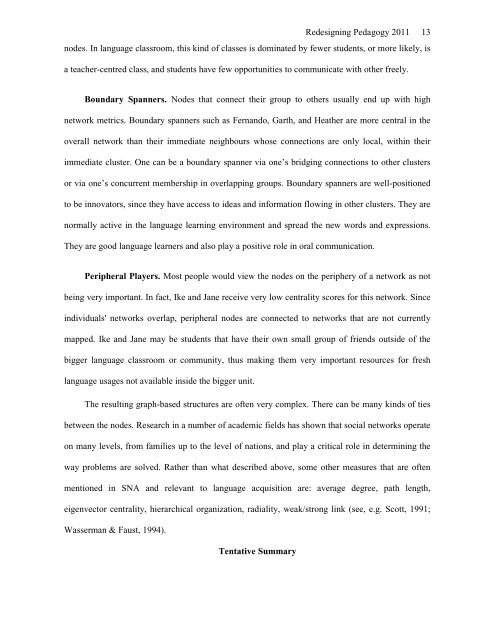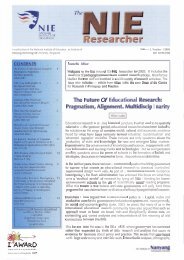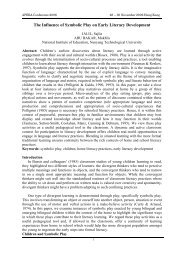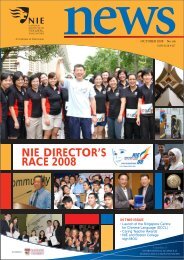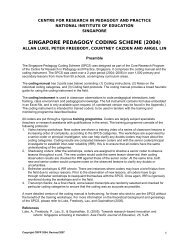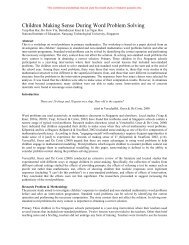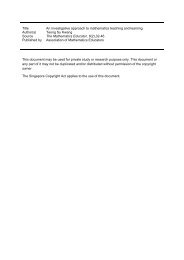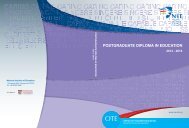Classroom interaction analysis techniques for classroom teachers ...
Classroom interaction analysis techniques for classroom teachers ...
Classroom interaction analysis techniques for classroom teachers ...
Create successful ePaper yourself
Turn your PDF publications into a flip-book with our unique Google optimized e-Paper software.
Redesigning Pedagogy 2011 13nodes. In language <strong>classroom</strong>, this kind of classes is dominated by fewer students, or more likely, isa teacher-centred class, and students have few opportunities to communicate with other freely.Boundary Spanners. Nodes that connect their group to others usually end up with highnetwork metrics. Boundary spanners such as Fernando, Garth, and Heather are more central in theoverall network than their immediate neighbours whose connections are only local, within theirimmediate cluster. One can be a boundary spanner via one’s bridging connections to other clustersor via one’s concurrent membership in overlapping groups. Boundary spanners are well-positionedto be innovators, since they have access to ideas and in<strong>for</strong>mation flowing in other clusters. They arenormally active in the language learning environment and spread the new words and expressions.They are good language learners and also play a positive role in oral communication.Peripheral Players. Most people would view the nodes on the periphery of a network as notbeing very important. In fact, Ike and Jane receive very low centrality scores <strong>for</strong> this network. Sinceindividuals' networks overlap, peripheral nodes are connected to networks that are not currentlymapped. Ike and Jane may be students that have their own small group of friends outside of thebigger language <strong>classroom</strong> or community, thus making them very important resources <strong>for</strong> freshlanguage usages not available inside the bigger unit.The resulting graph-based structures are often very complex. There can be many kinds of tiesbetween the nodes. Research in a number of academic fields has shown that social networks operateon many levels, from families up to the level of nations, and play a critical role in determining theway problems are solved. Rather than what described above, some other measures that are oftenmentioned in SNA and relevant to language acquisition are: average degree, path length,eigenvector centrality, hierarchical organization, radiality, weak/strong link (see, e.g. Scott, 1991;Wasserman & Faust, 1994).Tentative Summary


